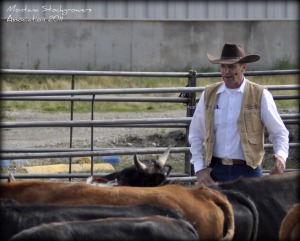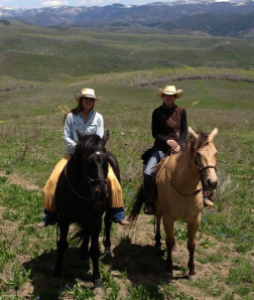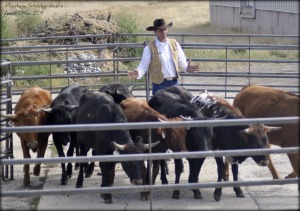Second Annual Ranch Sustainability Forum in Sheridan, Wyoming – May 18-20

Wayne Fahsholtz and the Padlock Ranch were the 2013 Region V Environmental Stewardship Award Program Winners. Read about the ranch’s sustainability efforts here.
Mark your calendars for May 18-20 to attend the 2015 Ranch Sustainability Forum in Sheridan Wyoming. Sheridan College and the Padlock Ranch will host the second annual forum, along with support of First Interstate Bank.
According to event coordinator, Wayne Fahsholtz, the event’s main purpose is to provide opportunities for ranchers and other agriculturalists to learn about new practices and gain information that may help improve their businesses.
The event boasts workshops on several topics, including low stress livestock handling, profit tips, range monitoring and employee relations. Keynote speaker, Nina Teicholz, will share information related to her recent book, “Big Fat Surprise: Why meat, cheese and eggs fit in your diet.”
Attendees will have the opportunity to learn more about low stress livestock handing in a two-day workshop at the Sheridan College Edward A. Whitney Academic Center presented by Whit Hibbard, publisher/editor of the Stockmanship Journal.
Other speakers and forum topics include:
- “Welcome to Sheridan College” – Paul Young, President, Sheridan College
- “Agriculture at Sheridan College” – Keith Klement, Director of Agriculture, Sheridan College
- “Hiring and Retaining Top Talent” – Kirk Jacobson, Human Resource Director for Beef Northwest Feeders
- “Agriculture’s 2050 Challenge” – Barry Dunn, Dean of the College of Agriculture & Biological Sciences, South Dakota State University
- Record Keeping and Mapping Software – AgTerra Technologies of Sheridan, Wyoming
- “Keys to Healthy Ranch Businesses” – Burke Teichert, Ranch Consultant and Retired – Vice Pres., Ag Reserves, Inc.
- “Measuring the BCS of Land – for management and markets.” – Greg Simonds, Vice-President of Ag Operations of Ensign Group; Faculty affiliate with Colorado State University Animal Science Department
- “Marketing Trends and Influences” – Wayne Fahsholtz, Owner AgWin Group, LLC; Past CEO Padlock Ranch
The complete agenda and details can be found online at agwingroup.com. Tickets may be purchased on EventBrite, of by contacting Wayne Fahsholtz at (307) 751-4507. A room block is reserved at the Sheridan Center Best Western.
Be sure to catch up on a highlight from last year’s Ranch Sustainability Forum, as Walker Milhoan shares how Ranching Meets Technology with mobile and web tools to improve your productivity. Click here to read more.





